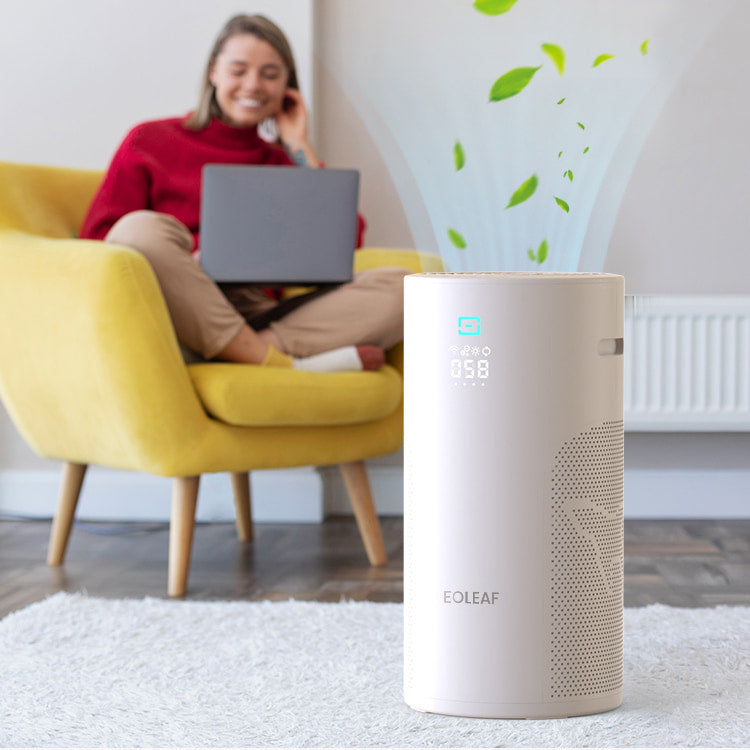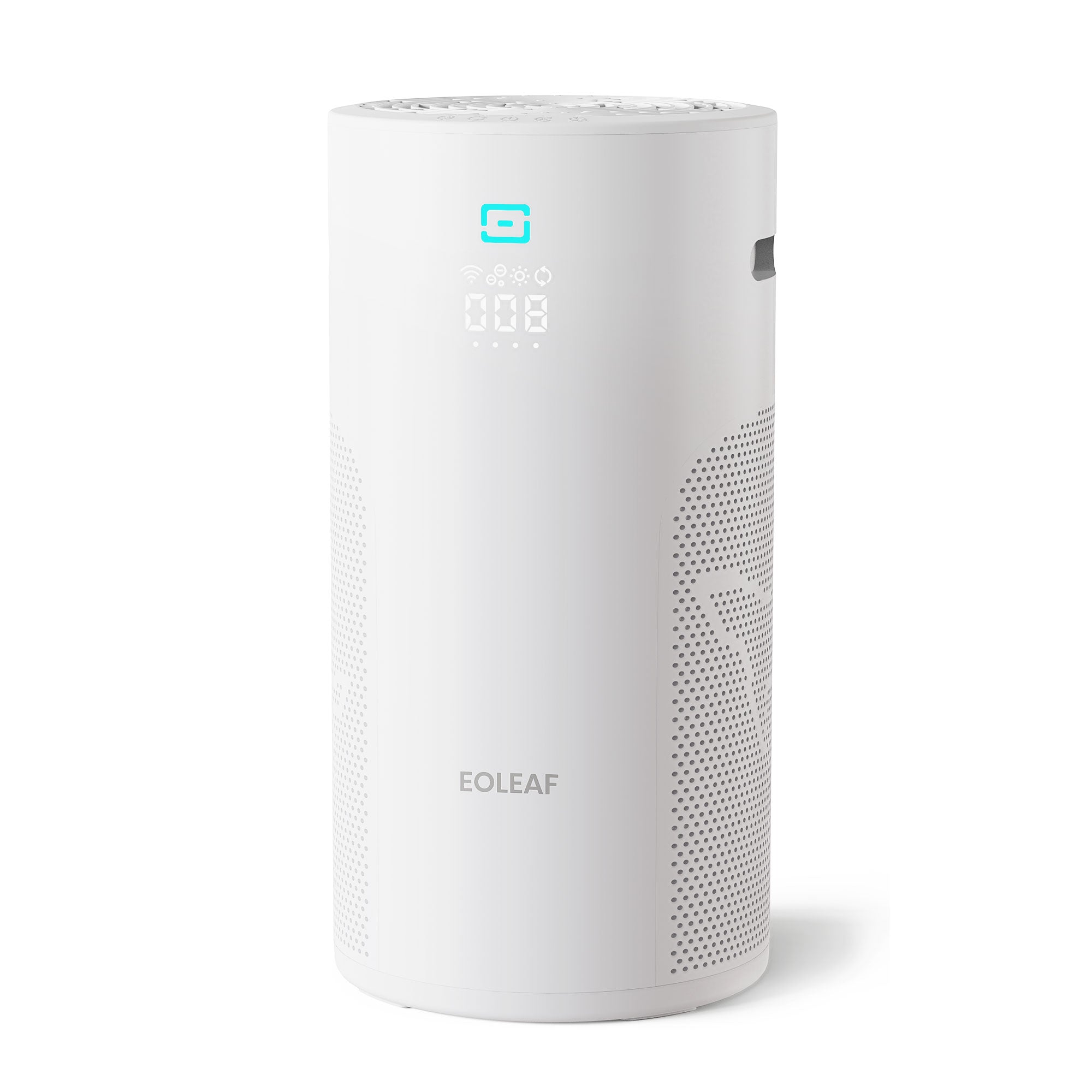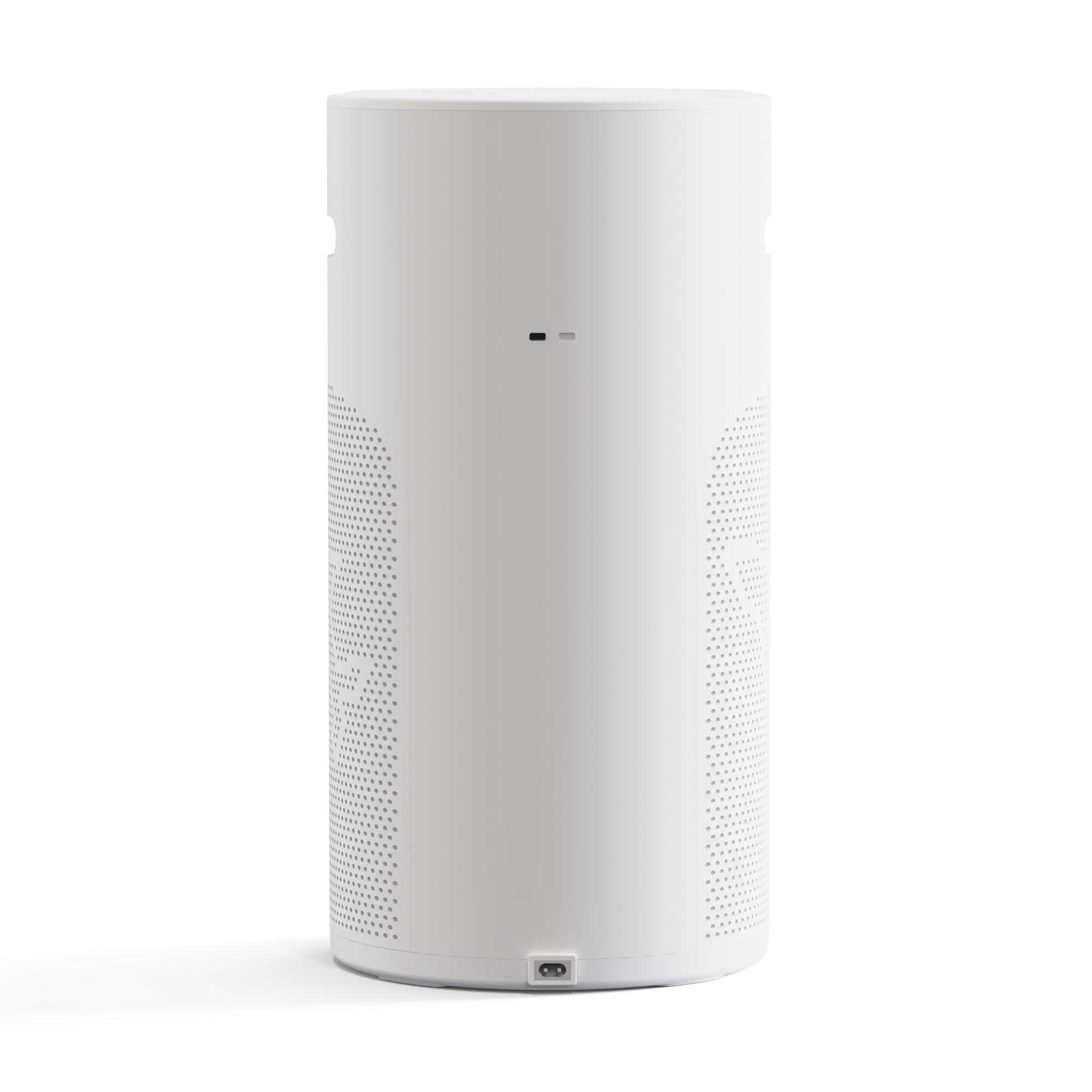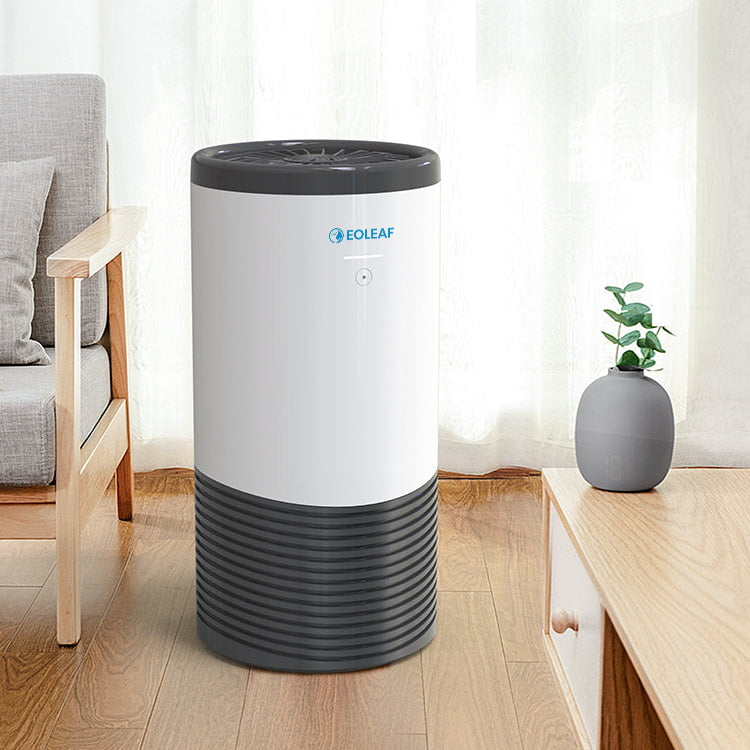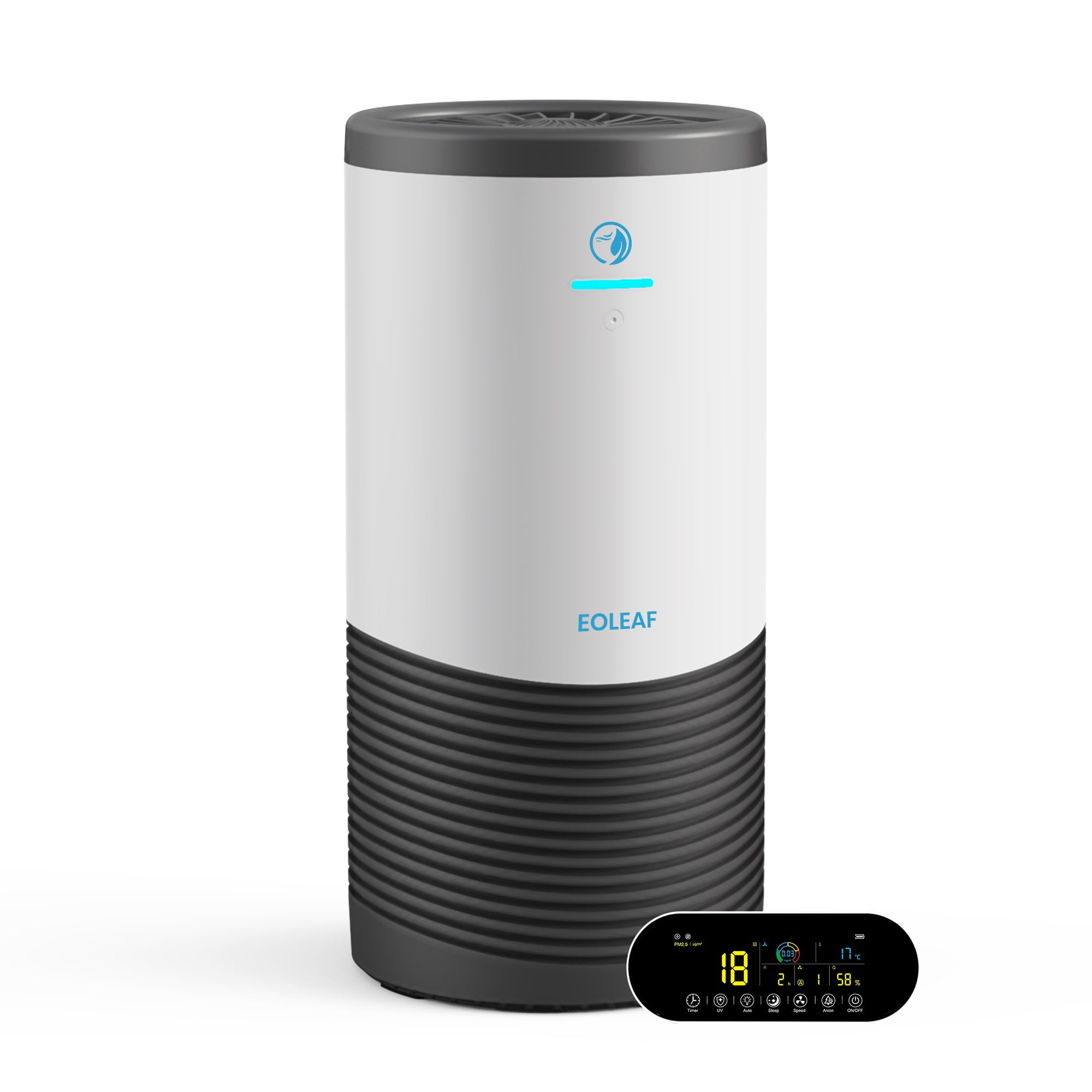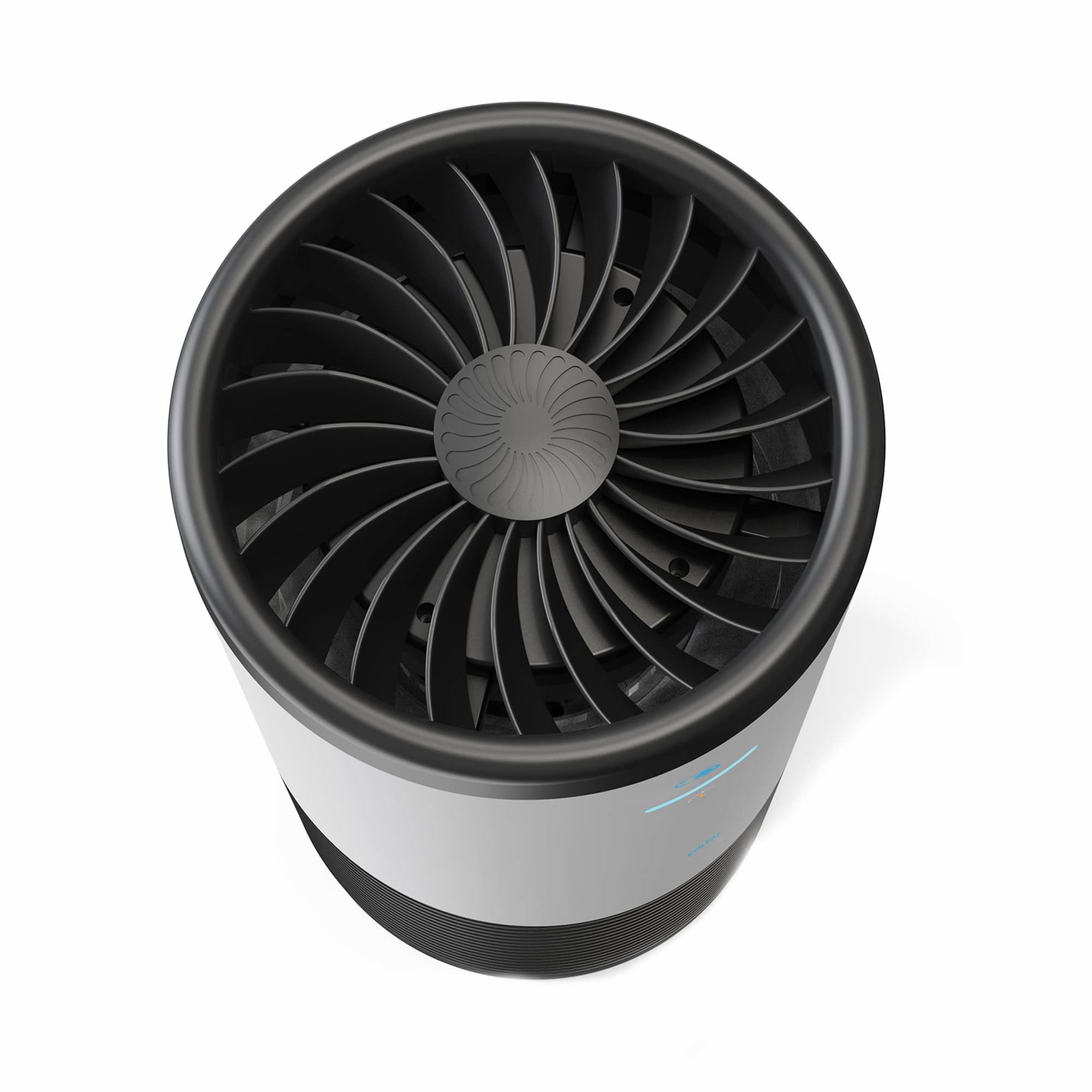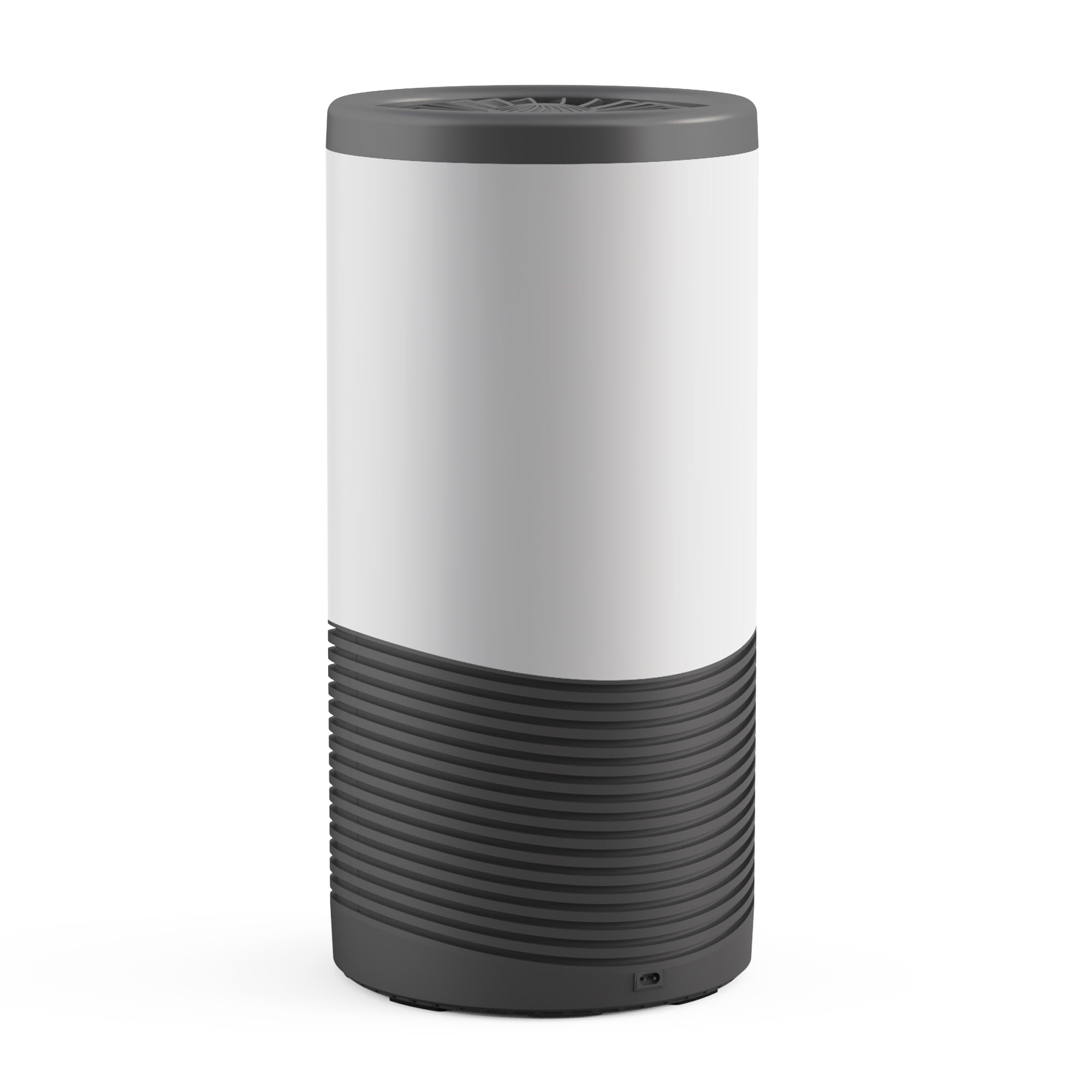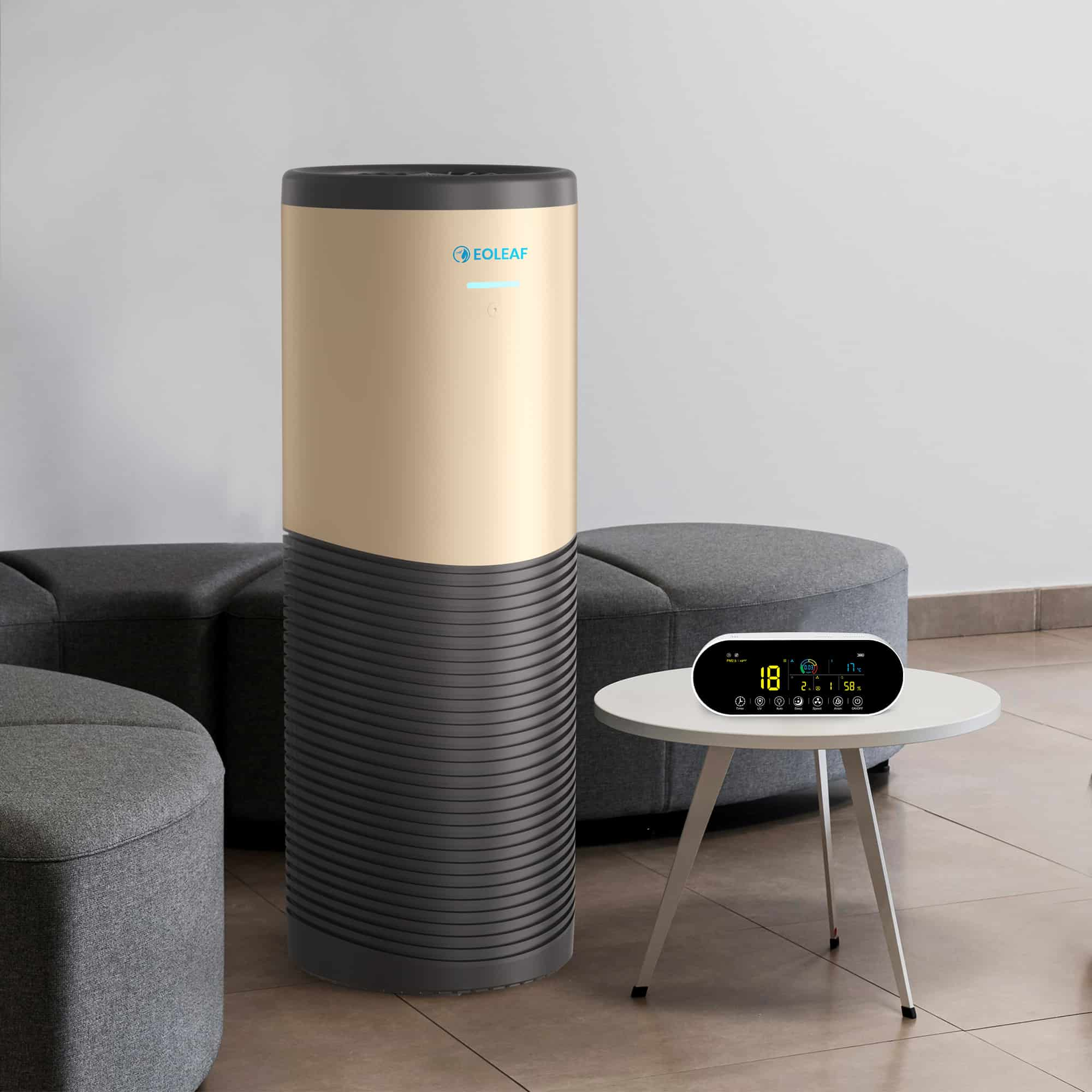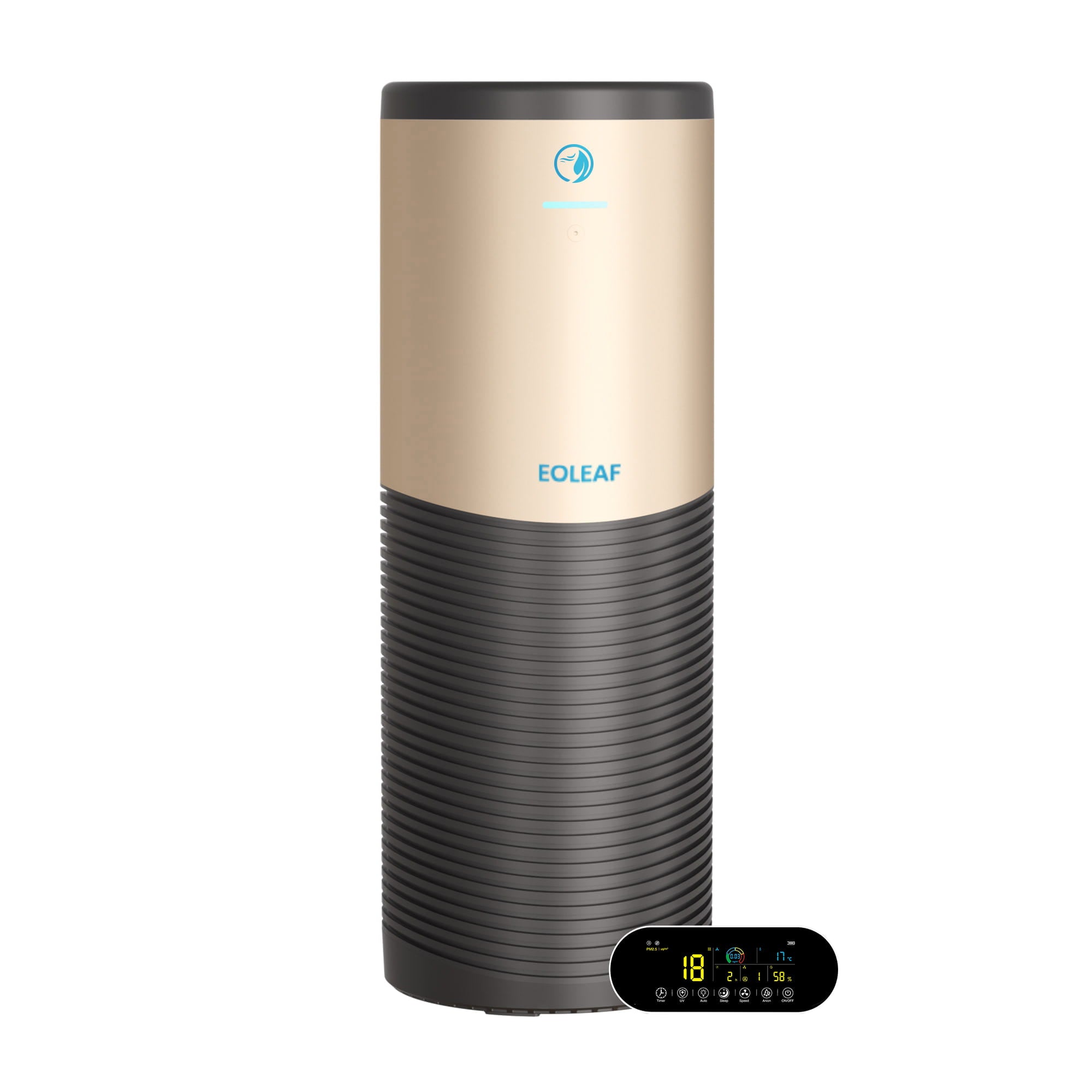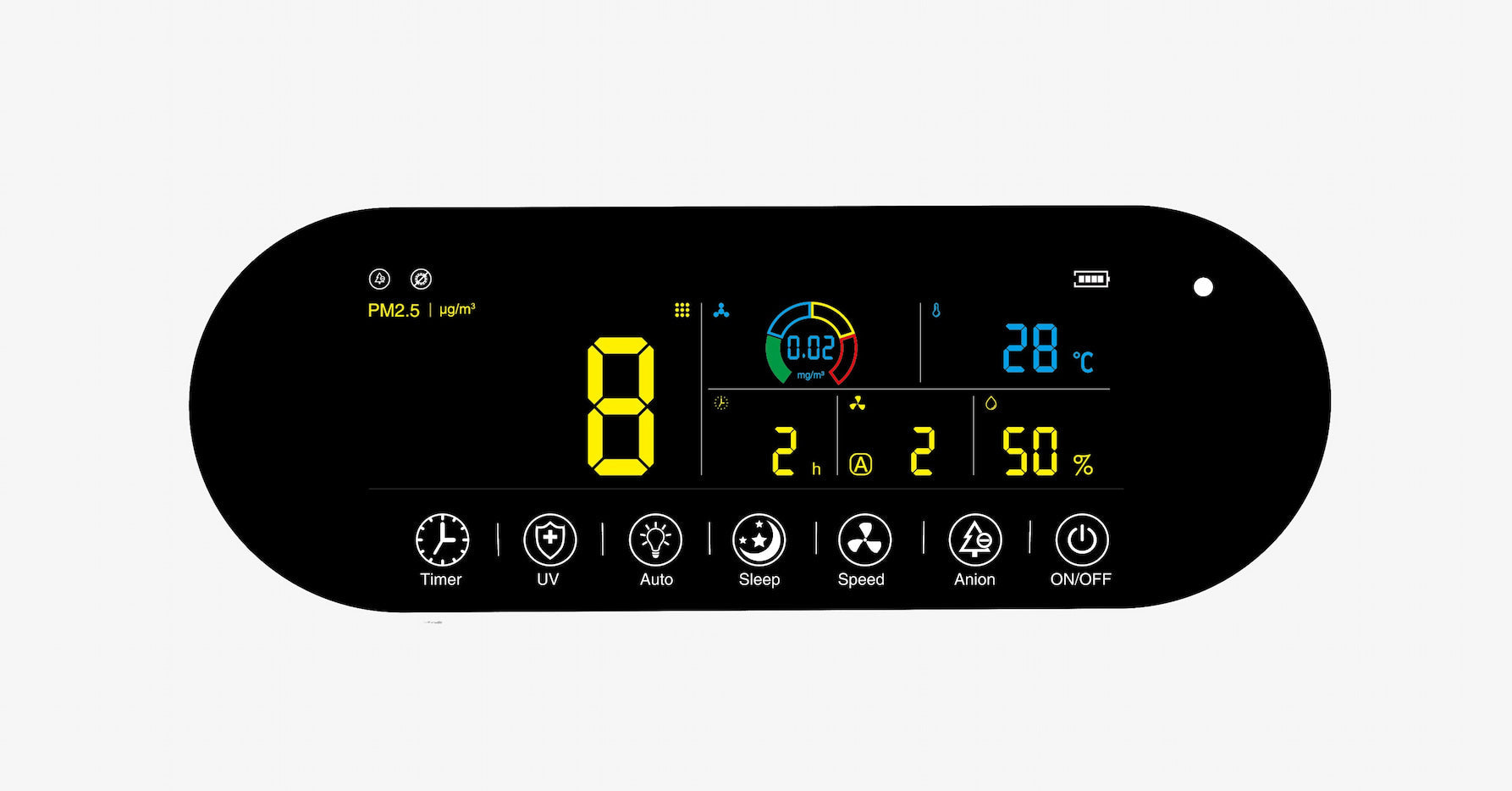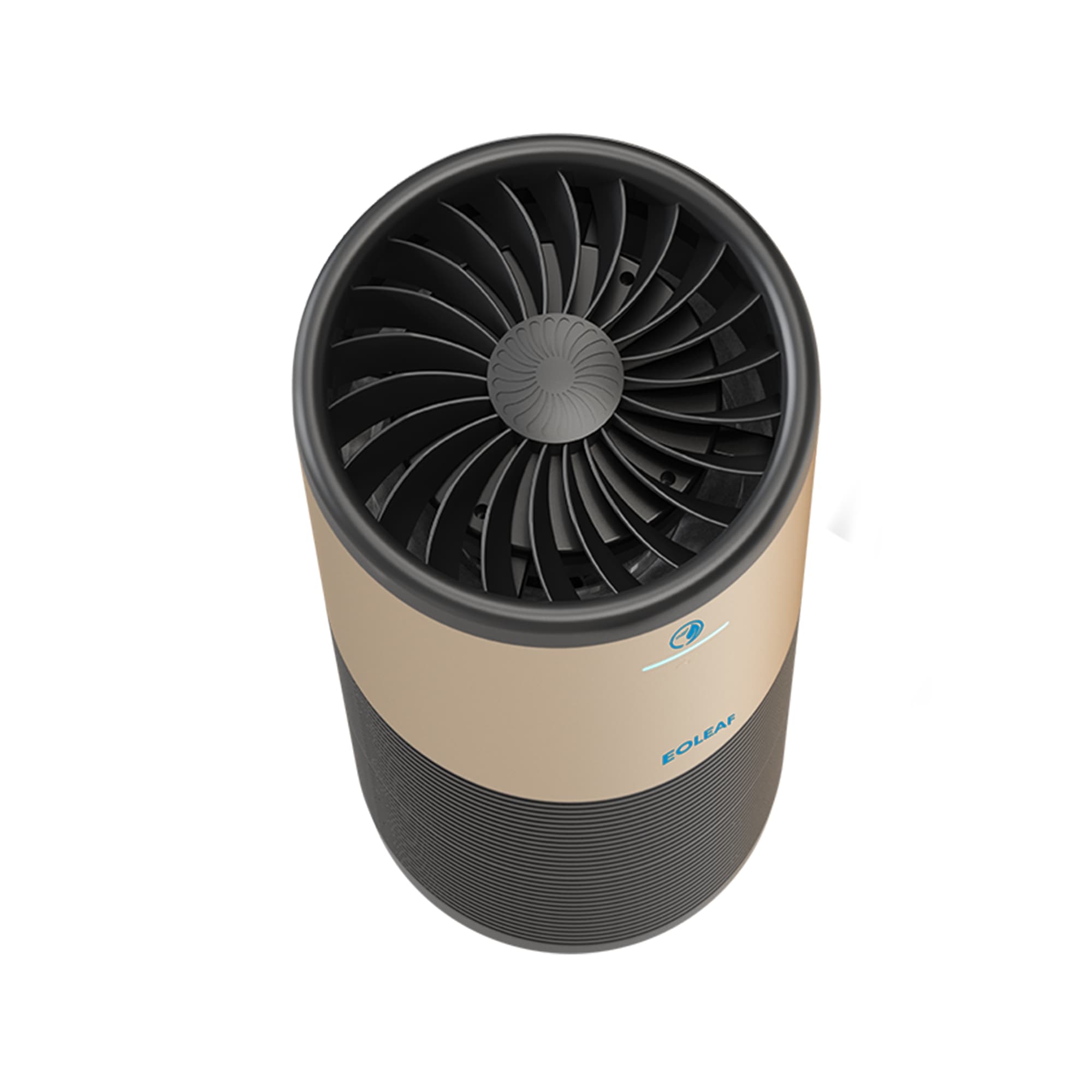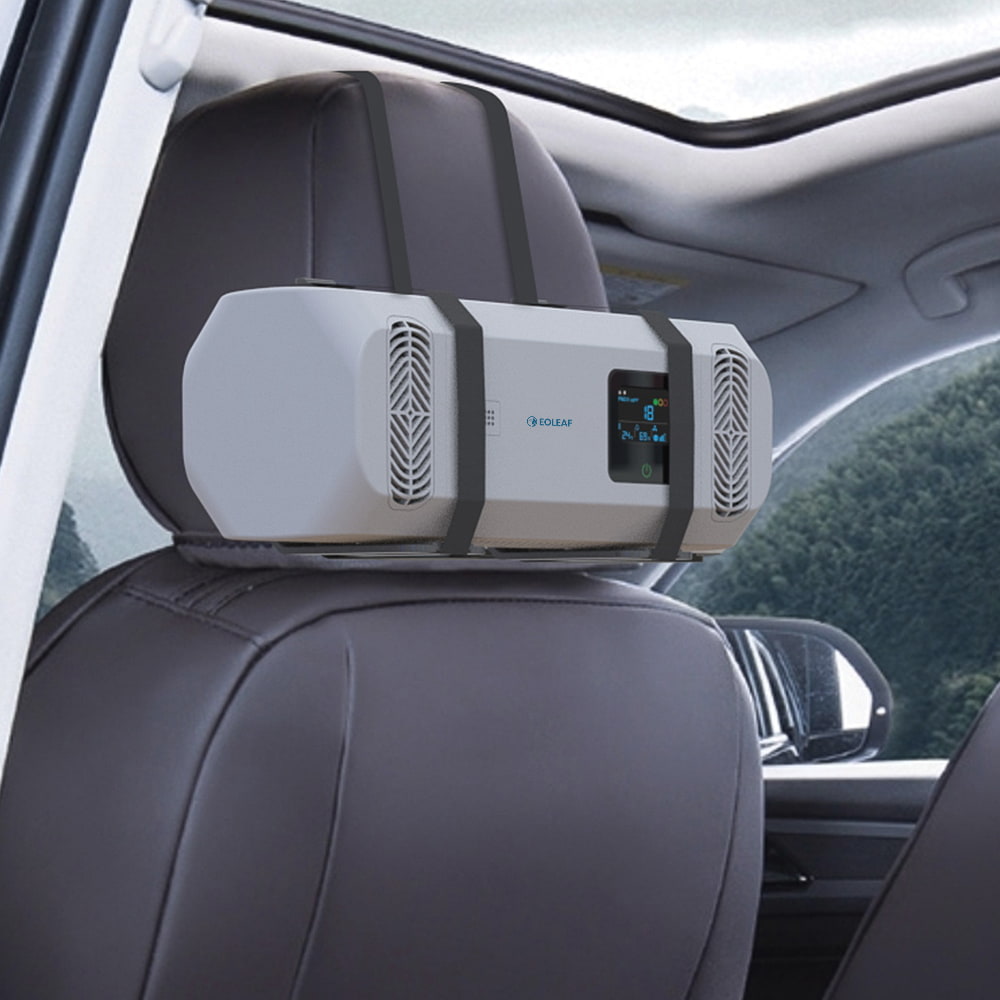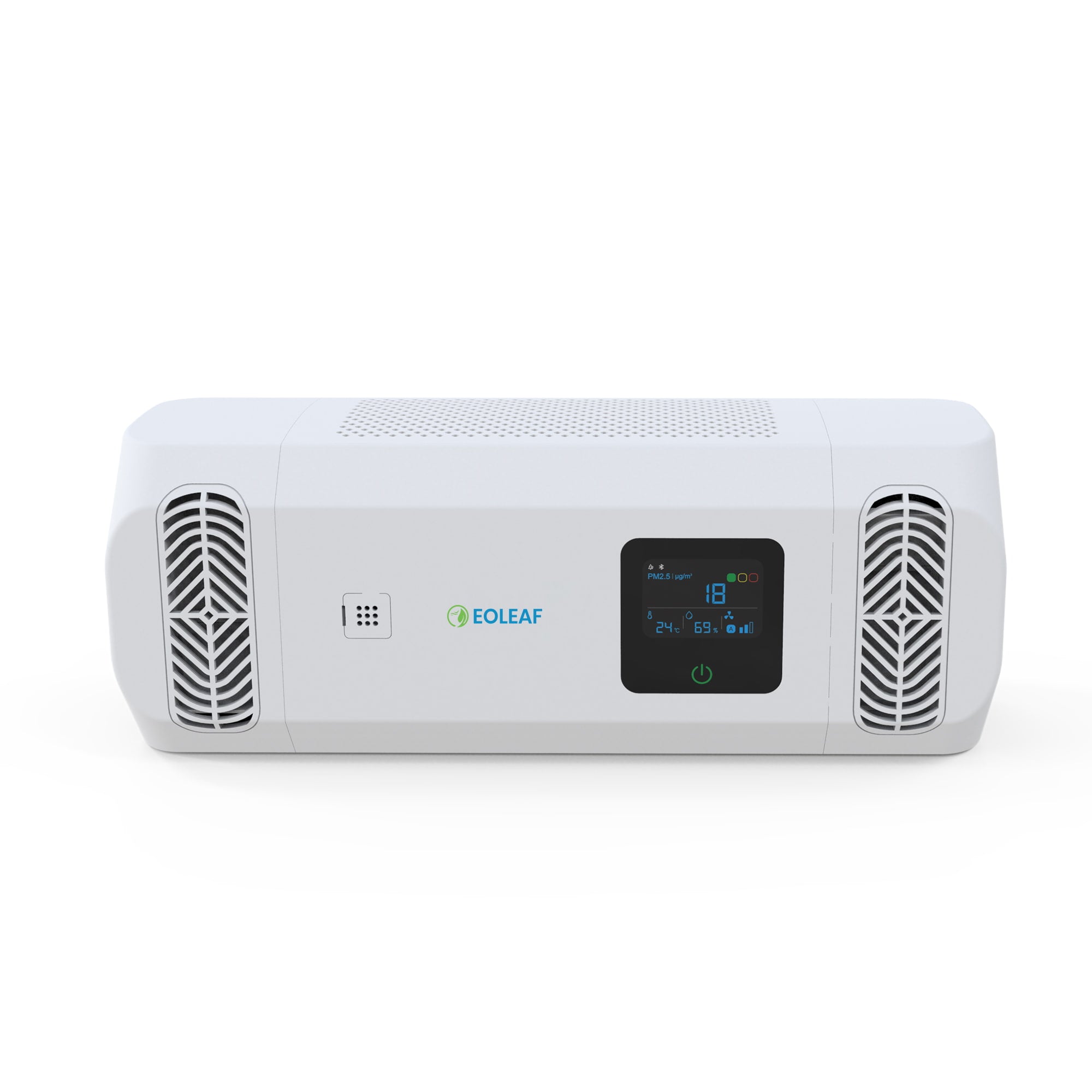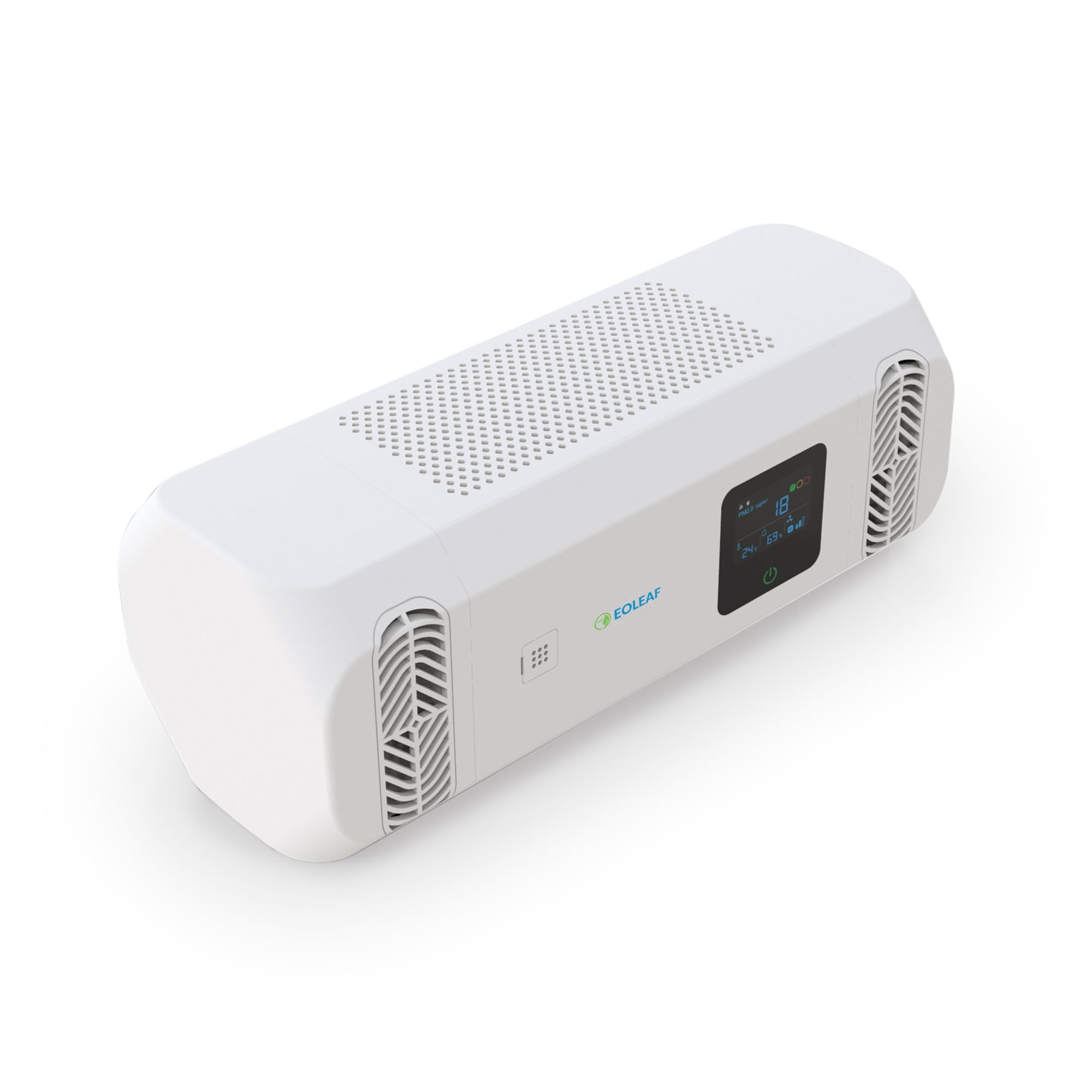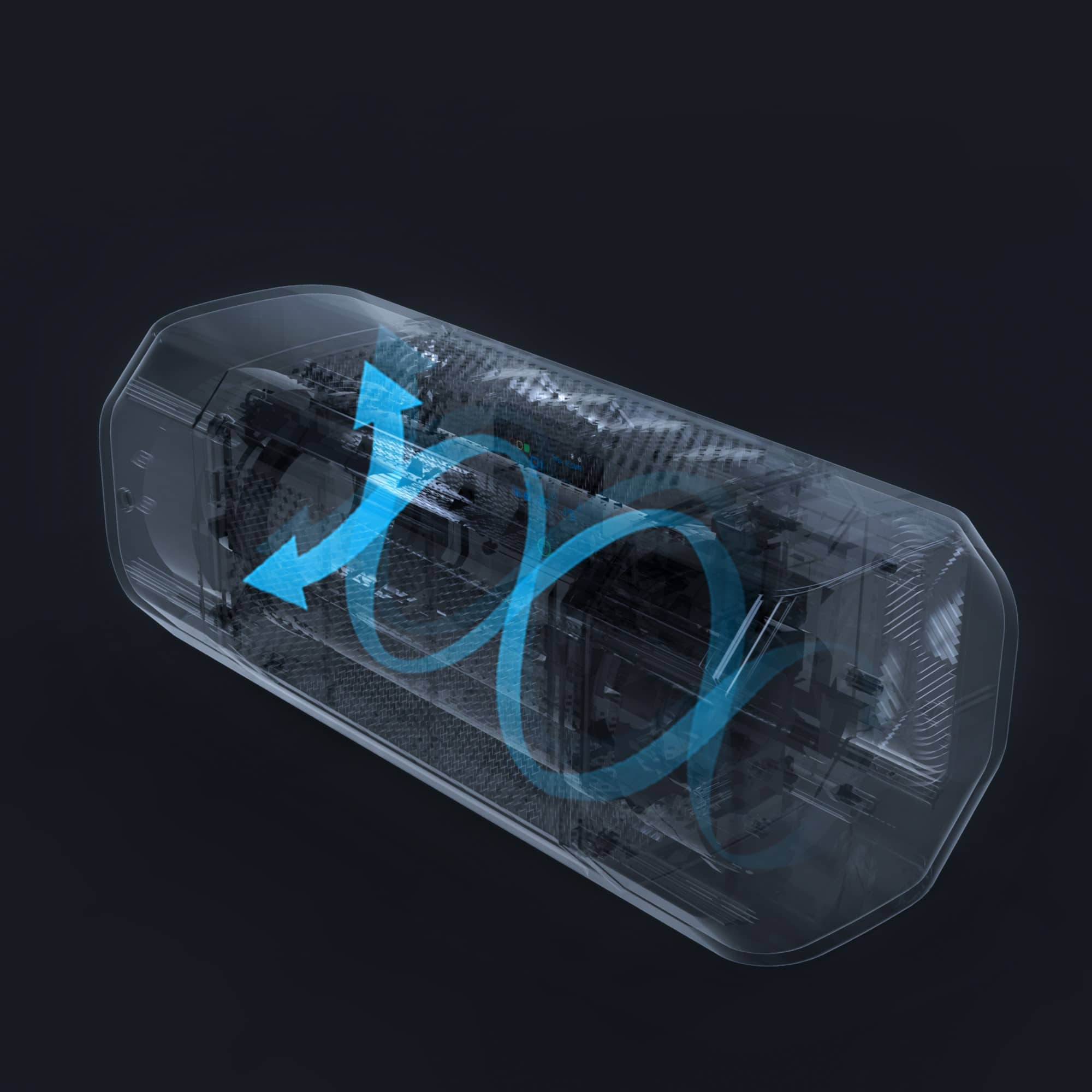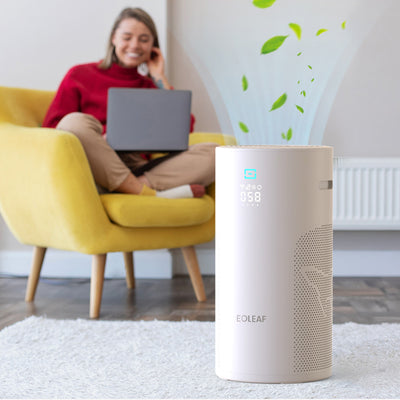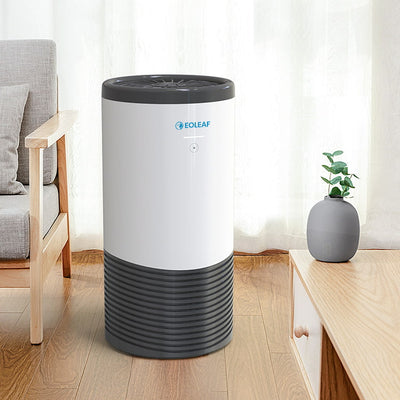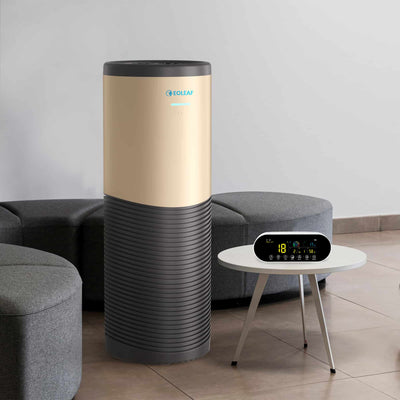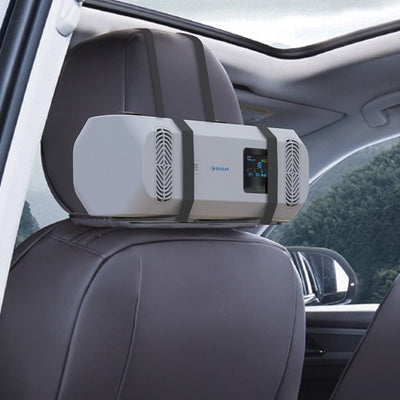All about UVC sterilisation
The demand for air purifiers has exploded in recent years due to concerns over air quality and the COVID-19 (SARS-CoV-2) pandemic. According to the World Health Organisation (WHO), 99% of the world’s population breathes air that exceeds its guidelines. This means that nearly every one of us breathes sub-quality air filled with pollutants and airborne chemicals. A recent American study showed that as of 2022, the global air purification market is worth 13.97 billion USD and is expected to grow 7.3% annually from 2023 to 2030, reaching 31.83 billion USD by 20271.
It is important that people are concerned over the state of the air they are breathing. This also means that the market is now flooded with air purifier devices offering a wide range of technologies, one of which includes ultraviolet (UV) sterilisation. UV light has been utilised for decades to disinfect surfaces, water, and air, but does this technology actually protect us against airborne viruses? Read below to learn more about UV sterilisation technology and how it can protect you from indoor pollutants.

What is UV sterilisation?
History of UV sterilisation
UV sterilisation’s germicidal capacity has led to life changing technologies for over one hundred years in various health and industrial sectors. A brief history of UV sterilisation is as follows:
- 1877 – researchers Downes and Blunt perform a study that discovers sunlight’s capacity to disinfect and prevent microbial growth
- They observe that inactivation of microorganisms (germicidal disinfection) depends upon wavelength of radiation, intensity, and time
- 1903 – Niels Ryberg Finsen, a scientist from the Faroe Islands, was awarded the Nobel Prize in 1903 for his work using ultraviolet radiation to combat lupus
- 1930 – F.L. Gates publishes a study showing peak effectiveness of bacterial disinfection and germicidal action at 265 nm
- 1930s – following World War II, UVC sterilisation technologies are employed in various industrial settings like processing plants, dairies, and pharmacies in an effort to reduce microbiological contamination and infection
- 1937 – researchers Wells et al. perform a study successfully using UV sterilisation to prevent airborne spread of measles in day schools in Philadelphia, noting its germicidal capabilities
- 1940s and 1950s – other researchers are unable to reproduce Wells’ successes in combatting infection, leading to widespread abandonment of the technology
- 1956-1962 – a study on two groups of guinea pigs exposed to tuberculosis show that UV sterilisation was able to protect one group of guinea pigs from infection whilst the other became infected, another success in UV’s germicidal action and disease control
- 1985-1992 – a rise in tuberculosis in the United States leads to renewed interest and investment in UV sterilisation for germicidal purposes
- 1990s to present – efforts to study techniques and proper guidance for using UV sterilisation as a germicidal method are undertaken
- 2009 – tuberculosis infection is significantly reduced for guinea pigs housed above a HIV-TB ward using UV sterilisation, marking the first controlled, clinical experiment of its kind in preventing disease transmission2
The benefits of Eoleaf air purifiers:
-
Powerful HEPA-certified filter (up to 670 m3/hr)
-
Discreet and elegant design
-
Easy to use (equipped with Automatic mode) and does not require installation or assembly
-
Can be placed anywhere in your space thanks to our 360° technology
-
Real-time air quality data
How does UV sterilisation work?
Today, you are likely familiar with dermatologists’ warnings about the health risks of the sun’s rays. The damage to your skin caused by the sun is due to UV exposure – the outer layers of our skin contain melanin, a pigment that protects us from UV rays. When the outer layers of our skin are exposed to too much UV, it causes them to burn, leaving the deeper layers of skin exposed to cell damage3. UV sterilisation works in a similar way, but with wavelengths specifically chosen for their germicidal capacity and their safety for humans: UV-C rays. UV technologies inside an air purifier device, for example, target specific bacteria and viruses with the goal of damaging their DNA.
Upon being exposed to UVC radiation, the RNA and DNA of microorganisms absorb the rays. More specifically, the radiation cross-links thymine and cytosine (pyrimidine nucleoside bases) within the same DNA strand. They then become non-pairing bases. This process leads to disturbed abilities to replicate, transcribe, and translate, ultimately causing bacterial cell death and viral inactivation. Simply said, bacteria and viruses can no longer reproduce and are inhibited from growing into colonies that can cause health problems in your body and in the bodies of others when they spread. This controls pathogen infection, including against pandemic-scale viruses like COVID-19.
One of the great advantages of UV sterilisation for use in germicidal efforts is that, contrary to other forms of sterilisation and disinfection (such as antibiotics or hand sanitisers), it is able to disinfect without the risk of bacterial resistance. As a matter of fact, UV sterilisation works to disinfect spaces of all germs (bacteria, viruses, microbes) regardless of their size or shape. This is why it is a sterilisation and disinfection technology that is often found in hospital settings and other medical rooms and spaces, similarly to HEPA filters.
The different types of UV light
UV light is classified into three different types distinguished by their different wavelengths. The sun produces all three of these types, but each type’s effect on organic matter varies:
- UVA: this is the form of UV light with the longest wavelength (315-400 nanometres). It has the potential to penetrate the middle layer of your skin (the dermis) and is most likely to cause skin damage and cancer.
- UVB: this form of UV light has a wavelength a bit shorter than UVA rays (280-315 nm). Due to their shorter wavelength, they usually do not have the ability to access deeper than the outer layer of your skin (the epidermis).
- UVC: this form of UV light has the shortest wavelength (100-280 nm) and has the highest energy potential of the UV radiation spectrum. Due to their high energy transmission, these rays have the most potential to inactivate microorganisms and pathogens. In the atmosphere, it is blocked by the ozone layer so it does not reach the Earth’s surface. The only way that humans can be exposed to this type of UV light is by artificial means. This is the type of UV light that is used in most air purifier devices5.
How does UV light treat microorganisms and pathogens?
Exposure time
There are certain factors that control how effectively these microorganisms can be inactivated by UV light, the most important of which is the amount of time of exposure. Studies show that 99.99% of airborne pathogens exposed to 40 mJ/cm2 of UV light at a wavelength of 254 nm, the wavelength typically used in air purifier devices with UV sterilisation technology, will be inactivated or ‘killed’4. In order for this level of exposure to be germicidal, it would take up to several minutes. This is the reason why, contrary to what you might commonly read online, UV technology does not directly sterilise the air: it requires time. An air purifier’s airflow is far too fast to allow for the required amount of exposure. To effectively treat the air, it is only fully effective if used in combination with a HEPA filter (or equivalent) that first captures the germs, after which the UV irradiation traps microbes and sterilises the filter.
UV sterilisation used with HEPA-certified filtration
A systematic review showed that air purifier devices containing both UV sterilisation and HEPA-certified filters are the most effective at removing bacteria from the air and reducing the transmission of pathogens6. During the peak of the COVID-19 pandemic, governments in both the UK and in Belgium specifically recommended use of air purifiers containing both HEPA filters and UV sterilisation technologies to combat SARS-CoV-2 transmission and act as a germicidal agent.

Is an air purifier containing UVC light safe?
254 nm: the most effective UVC wavelength for the inactivation of microorganisms
It is common for hospital settings, notably operating rooms, to treat surfaces using UV lamps that emit a wavelength of 254 nm (UV light decontaminates within seconds) for germicidal purposes. It has been tested and proven to be a low-risk, effective way of reducing transmission of pathogens including the MRSA, SARS, and COVID-19 viruses (including SARS-CoV-2), particularly in rooms that cannot be properly ventilated. UVC light at this wavelength inactivates viruses and kills bacteria and mould by disrupting their DNA and RNA.
UV rays and human safety
The dangers of UVA and UVB rays have been noted by scientists and researchers all over the world. These two types of UV rays, though both harmful, do not have the same effects on skin.
- Skin ageing is associated with UVA ray exposure.
- Skin burning is associated with UVB ray exposure.
- Both UVA and UVB rays increase risk of skin cancer and genetic mutations because they both damage the DNA in skin cells.
- Both UVA and UVB rays impact eye health with exposure leading to cataracts and cancers of the eyelid7.

Source 8
Unlike UVA and UVB rays, UVC rays pose less danger for humans. UVC is a low-penetrating form of ultraviolet radiation, and 4-7% of UVC rays are reflected and absorbed in the first 2 µm of the outermost layer of the skin. This means that the deeper layers of the skin are protected from damage. As a result, UVC has been chosen for use in air purification products for its safety. However, direct exposure to the eyes to UV lamps emitting UVC rays can cause temporary damage (symptoms lasting 24-48 hours) and precautions to protect the eyes must be taken9.
Ozone
With customer safety in mind, the UV technology present in Eoleaf air purifiers is located at the centre of the device and does not leave the the device's enclosure. This protects the user from any sort of exposure. Our 254 nm UV lamps are also rated as ‘ozone-free’, meaning that they produce minimal or zero polluting ozone emissions that are harmful for both our health and the environment. Lamps that produce UV light at 254 nm do not create ozone because the energy released is not strong enough to break O2 down into O-. These lamps convert almost all of their energy/heat to UV rays. Note that even ‘ozone-free’ rated UV lamps can emit traces of ozone, which is tolerated in ‘ozone-free’ lamps as long as ozone emissions remain under 0.1 PPM (the level recommended by the World Health Organization).
Upon testing our units, we were able to confirm that, if they emit any ozone at all, it would be less than 0.01 PPM. This study was performed simply for the sake of transparency since, even if our units did emit ozone, it would be filtered/reabsorbed by the activated carbon filter and photocatalysis, two other technologies we use in our systems.
The Eoleaf difference
(The article continues below)
NeoPur 400 air purifier
40 m² (450 sq ft) coverage area - Smart & Connected
TeraPur 600 air purifier
80 m² (850 sq ft) coverage area - Ultimate all-in-one
AltaPur 700 air purifier
120 m² (1300 sq ft) coverage area - Professional model
PurCar air purifier
HEPA H13 Filter & Ioniser - For all vehicles
UVC sterilisation is only several of 8 highly efficient technologies that can be found in our top-of-the-line air purifiers. Using our proprietary multi-layer filtration method, we filter out the following air pollutants:
- Biological pollution
- Allergens (pet hair and dander, pollen, dust and dust mites, mould and its spores)
- Germs (viruses and bacteria)
- Chemical pollution
- Volatile organic compounds (VOCs)
- Toxic airborne gases and chemicals
- Fine particle pollution
Our devices remove 99.97% of particles down to a size of 0.01 microns from your indoor breathing air. Make airborne pollutants, chemicals, and gases a thing of the past with an Eoleaf air purifier. Refer to our in-depth Buying Guide to read more about our products and the technologies we offer or feel free to contact our team of air purification experts.

Frequently asked questions
What are the benefits of using UVC sterilisation for air purification?
UVC sterilisation is an extremely effective method of combatting airborne germs (viruses and bacteria).
Is UVC sterilisation safe for indoor air quality and human health?
UVC sterilisation technologies are commonly used in medical institutions like hospitals (especially in operating rooms). UV lamps used in air purification are designed to emit a wavelength of 254 nm, a wavelength proven to be low-risk to human health and highly effective at reducing disease transmission.
Can UVC sterilisation technology eliminate odours from the air?
UVC sterilisation technologies alone cannot remove odours from the air. If eliminating odours from the air is your goal, be sure to purchase an air purifier with other technologies, especially an activated carbon filter. Eoleaf devices contain 8 different technologies, two of which include UVC sterilisation technologies and an activated carbon filter!
What pollutants and pathogens can UVC sterilisation effectively target and eliminate?
UVC sterilisation technologies effectively target and eliminate airborne viruses and bacteria. It works to kill or deactivate all bacteria, viruses, and microbes regardless of their shape or size.
Are there any potential risks or side effects associated with UVC sterilisation technology?
UVC sterilisation technologies were developed specifically for their safety. However, direct exposure to the eyes may cause temporary damage, so it is always recommended to protect the eyes when handling UV lamps.
Are there any maintenance requirements for UVC sterilisation systems?
UVC lamps require replacing every 20,000 hours of use. This is the best way to ensure optimal functioning during the UVC sterilisation and photocatalysis steps of our air purification process.
Can UVC sterilisation technology be used in combination with other air purification methods?
Absolutely! In fact, Eoleaf devices contain 7 other air filtration methods as part of our 8-step air purification process. It is always recommended to purchase a device containing multiple air purification technologies in order to combat all types of air pollution including germs, fine particles, allergens, and chemical pollution.
Resources
1 Advanced Materials. (2018). (publication). Air Purifier Market Size, Share & Trends Analysis Report By Technology (HEPA, Activated Carbon), By Application (Commercial, Residential), By Region (APAC, Europe, MEA, North America), And Segment Forecasts, 2023 - 2030. Retrieved February 26, 2023, from https://www.grandviewresearch.com/industry-analysis/air-purifier-market
2 Reed NG. The history of ultraviolet germicidal irradiation for air disinfection. Public Health Rep. 2010 Jan-Feb;125(1):15-27. doi: 10.1177/003335491012500105. PMID: 20402193; PMCID: PMC2789813.
3 U.S. National Library of Medicine. (2022, November 18). Sun's effect on skin. MedlinePlus. Retrieved February 26, 2023, from https://medlineplus.gov/ency/anatomyvideos/000125.htm
4 Beck, S. E., Rodriguez, R. A., Hawkins, M. A., Hargy, T. M., Larason, T. C., & Linden, K. G. (2015). Comparison of UV-induced inactivation and RNA damage in MS2 phage across the germicidal UV spectrum. Applied and Environmental Microbiology, 82(5), 1468–1474. https://doi.org/10.1128/aem.02773-15
5 Center for Devices and Radiological Health. (2023). Ultraviolet (UV) radiation. U.S. Food and Drug Administration. Retrieved February 26, 2023, from https://www.fda.gov/radiation-emitting-products/tanning/ultraviolet-uv-radiation#3
6 MediLexicon International. (2021, October 27). UV air purifiers: Pros, cons, and effectiveness. Medical News Today. Retrieved February 26, 2023, from https://www.medicalnewstoday.com/articles/uv-air-purifier#how-effective-are-they
7 UV radiation. The Skin Cancer Foundation. (2022, July 21). https://www.skincancer.org/risk-factors/uv-radiation/
8 Sunscreen. Simply Sunscreen. (n.d.-b). https://www.simplysunscreen.com/
9 ISO. (2016). Online browsing platform (OBP) - ISO. International Organization for Standardization. Retrieved February 26, 2023, from https://www.iso.org/obp/ui/iso
Eoleaf's range of air purifiers
NeoPur 400 air purifier
40 m² (450 sq ft) coverage area - Smart & Connected
TeraPur 600 air purifier
80 m² (850 sq ft) coverage area - Ultimate all-in-one
AltaPur 700 air purifier
120 m² (1300 sq ft) coverage area - Professional model
PurCar air purifier
HEPA H13 Filter & Ioniser - For all vehicles

